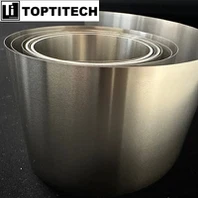In the process of metal welding, if the welding seam is too wide and the size of the welding leg is too large, not only the welded joint is severely heated but also causes the welding seam to have coarse grains, decrease in plasticity and toughness, and the welding heat has a large influence, which is easy to produce welding stress and deformation, and waste materials add cost.
Conversely, if the weld seam is too narrow and the size of the weld leg is too small, the base metal and the weld seam may be poorly fused, causing stress concentration, and at the same time, the weld seam is prone to welding defects such as undercuts and cracks, which affects the strength of the joint. Therefore, the correct determination of the weld size is the key to ensuring the welding quality.
After years of research, the empirical calculation formula for the seam size of manual arc welding and submerged arc welding has been obtained. This empirical formula provides a theoretical basis for determining the seam size of manual arc welding and submerged arc welding in the welding process practicability.
Empirical calculation formula of weld size of hand arc welding
1. Empirical formula for butt welding seam size
According to different plate thicknesses and welding method requirements, butt welds can be divided into I-shaped welds (that is, no groove butt welds), V-shaped groove butt welds, and U-shaped groove butt welds.
(1) Empirical calculation formula of I-shaped weld width
In production, generally, the plate thickness is less than 6mm without a bevel, forming an I-shaped weld,
Weld width: C=δ+2 (1)
In the formula, δ—the thickness of the workpiece, mm.
(2) Empirical formula for calculating the width of V-shaped butt weld with the blunt edge
As shown in the figure, the V-shaped groove weld with a blunt edge, the groove angle is α, the gap is b, and the blunt edge is P, according to the method of solving the triangle:
Weld width
C=AB+CD+b+2e
=2(δ-P)tan(α/2)+b+2e
≈δ+3 ⑵
In the formula, e—the welding seam coverage width on both sides of the groove, generally take e=1.5~2mm.
Take P=2, b=2, α=60°, e=1.5.

(3) Empirical calculation formula for butt weld width of U-shaped groove with the blunt edge
The U-shaped groove with a blunt edge is shown in the figure, the blunt edge is P, the gap is b, the groove angle is β, and the root radius is R, according to the method of solving the triangle:
Weld width
C=2(δ-P-R)tanβ+2R+b+2e
≈0.35δ+12.5 ⑶
Take P=2, b=2, e=1.5, R=5, β=10°.

2. Empirical formula for fillet weld fillet size
In fillet welds, the joint surfaces of the two weldments form a right-angle or near-right-angle welded seam, and the weld size of a fillet weld mainly refers to the size of the fillet.
T-joint fillet weld foot size
K=δ+2 ⑷
In the formula δ—the thickness of the thinner of the two weldments

3. Empirical formula for combined weld size
The combined weld means that the same joint weld consists of several different welds.
As shown in the figure, it is a T-joint combined weld formed by a V-shaped butt weld with a blunt edge and a fillet weld.
The groove angle is β1, the obtuse side is P, and the gap is b. According to the method of solving triangles:
Welding foot size K=(δ2-P)tanβ1+b+e≈1.2δ2+1.5 (5)
Take P=2, b=2, e=2, β1=50°.

Empirical calculation formula of seam size of submerged arc automatic welding
Seam size of submerged arc automatic welding
C=δ+10
Where δ—plate thickness, mm.
This formula is checked according to the calculation formula of weld fusion width in "Welding Methods and Equipment", and the results are basically the same.
(1) The empirical calculation formula of weld size obtained in this paper has been proved to be correct after years of practical application, and can fully meet the actual needs of production;
(2) Weld size determination method for groove welds with blunt edge V-shape and blunt edge U-shape, for similar groove forms (such as single-sided V-shape, double-sided V-shape, etc.), it can be calculated and determined according to similar methods ;
(3) The weld size value calculated by the above method is only a parameter value. In actual application, it can be slightly adjusted on the basis of the parameters depending on the specific situation, and generally, the tolerance is about ±1mm;
(4) The formula is concise, easy to remember, and easy to use. It is not only suitable for engineering technicians and operators but also especially suitable for inexperienced people.
Contact
TEL: +8618992731201
FAX: 0917-3873009
EMAIL: zhangjixia@bjygti.com
ADD: 1502, Block A, Chuang Yi Building
No. 195, Gaoxin Avenue, High-tech Development Zone, Baoji City, Shaanxi, China




